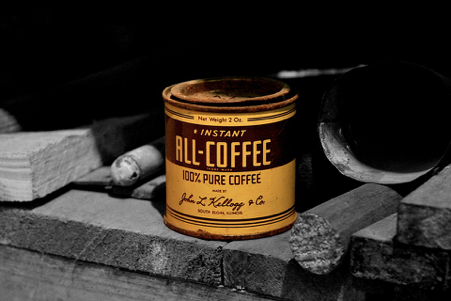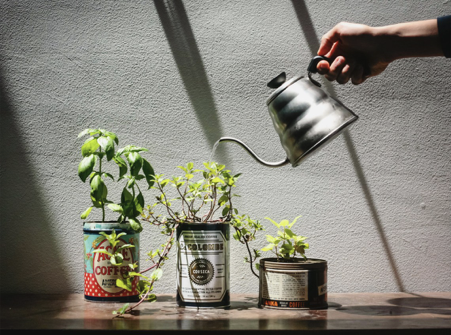If you enjoy both coffee from tight-sealed aluminum cans and planting herbs, then this is a post that will be mighty convenient for you.
So you’ve gone and used up all the coffee beans from the tin cans you bought from the supermarket and now want to dispose of them, right? Or perhaps instead of going on with that plan, you can do one better – repurpose them as holders to hold and grow your herbs.

But why should we even bother recycling tin cans instead of just simply throwing them in the bin? Well to protect the environment of course and save up on clean up costs. If you have no idea what we’re talking about, then that’s just what the accurately-backed statistics below are here to inform you about:
Benefits of Recycling Aluminum
- Saves up on 1.5 million tons of wasted aluminum cans that end up in landfills worldwide every year.
- It contributes less than 14.1% of the greenhouse gases emitted by the aluminum industry that results in global warming.
- With less aluminum smelting, there is less production of sulfur oxide and nitrogen oxide, two gases that are key elements that result in smog and acid rain.
- Aluminum cans are 100% recyclable and in 60 days can be turned back into a new can and into store shelves again.
- Recycling aluminum saves 90-95% of the energy needed to make aluminum from bauxite ore.
So imagine the good you could be doing to Mother Nature, your self and the rest of the world for that matter of you take the aforementioned qualities of recycling into account.
And now that we’ve gotten that out of the way, let our insightful DIY post here instruct you on how you can repurpose your empty coffee cans into long-lasting plant or herb holders as a natural source of medicine for you and your family.
As a bonus, with the right floral arrangements, it can give your house a neat touch of Spring decor as well.
Things You Need
Before you get started, make sure you have the following items:
- 3-pound coffee can
- Bleach
- Nail or screw
- Safety glasses
- Spray paint
- Compost
- Peat moss
- Sand
- Grow lights
- 10-15-10 water-soluble fertilizer
- Pan
How to Plant a Coffee Tin Herb Garden

And now, on behalf of coffeedorks.com, let’s get you started on recycling your coffee tin has a herb planter with the following steps:
- First, clean the empty coffee container with a combo of 1 part bleach and 9 parts of warm water and then put it out to air dry.
- Use a screw or a nail to punch holes to the sides of the coffee can, toward to the bottom. But be sure to wear safety glasses when you do this. Make at least four quarter-inch holes for good drainage. If you want, you can use spray paint to paint the can.
- Then fill the can with a growing medium consisting of 1 part compost and 2 parts sand and peat moss. Later, add a few granules of slow-release fertilizer into the soil-mix before planting while making sure you follow the label instructions.
- First, plant seeds twice as close as recommended, then thin seedlings by removing the weaker plants. Once you remove the weak seedling, the plants that are left behind need to be spaced as close to the recommended space as possible.
- Now place the container outside, ensuring it faces the sun completely. If you’re growing herbs indoors, it is recommended that you use full-spectrum fluorescent bulbs that closely mimic the rays of the sun.
- Apply a 15-30-15 water-soluble fertilizer to container plants weekly. Be sure follow the instructions based on the kind of herbs that you’re growing.
- When top 1/2 inch of the soil feels dry to the touch, start watering the coffee can containers. Then slowly add water until about 10% of it seeps from the drainage holes. You can use a pan to catch and discard excess water that comes out from the drain holes. But try not to leave the can sitting in the pan of water. (From Cindy: I would suggest letting the soil in the can dry out a little more than just the top ½”. You don’t want to keep the roots too wet at all times.)
Tips
- Add pebbles or rocks to the bottom of the can to imrpove drainage.
- To keep the soil from washing out, place small pieces of fine wire screen over the drainage holes.
Here are more ideas regarding coffee discards:
